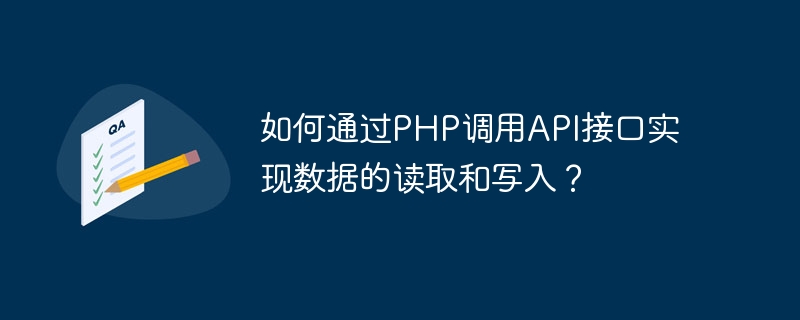

How to call the API interface through PHP to read and write data?
With the development of the Internet, API (Application Programming Interface) interfaces are increasingly used, which facilitates data interaction between different systems. As a powerful programming language, PHP can read and write data by calling API interfaces. This article will introduce how to use PHP to call the API interface to read and write data, and give corresponding code examples.
First of all, we need to understand what the API interface is. The API interface is a bridge for data interaction between different systems. It specifies the data transmission method and format. Before using the API interface, we need to confirm the access method of the API interface (such as GET, POST), URL address, parameters and return value format and other information.
Below we use a simple example to use PHP to call a public API interface to obtain weather information and write the obtained data to a local file. The following are specific steps and code examples:
<?php
// 创建一个cURL句柄
$curl = curl_init();
// 设置要访问的API接口的URL地址
$url = 'https://api.example.com/getWeather';
curl_setopt($curl, CURLOPT_URL, $url);
// 设置HTTP请求方法为GET
curl_setopt($curl, CURLOPT_HTTPGET, true);
// 发送请求并获取返回的数据
$response = curl_exec($curl);
// 关闭cURL句柄
curl_close($curl);
// 将返回的数据写入到文件中
$file = fopen('weather.txt', 'w');
fwrite($file, $response);
fclose($file);
echo '天气信息已成功写入文件中。';
?>In the above code, we first created it using the curl_init() function A cURL handle, and then use the curl_setopt() function to set the URL address of the API interface to be accessed and the request method to GET. Next, use the curl_exec() function to send the request and get the returned data. Finally, the returned data is written to a local file.
Through the above steps, we have implemented using PHP to call the API interface and write the obtained data to a local file. It should be noted that the format of the URL address, parameters and return value in the above code need to be set and adjusted accordingly according to the specific API interface.
To summarize, reading and writing data by calling the API interface through PHP can be achieved through the cURL function. First, create a cURL handle and set the URL address and request method of the API interface to be accessed. Then, send the request and get the data returned. Finally, save the returned data to a file or perform other operations.
I hope this article will help you understand how to call the API interface through PHP to read and write data. Thank you for reading!
The above is the detailed content of How to call the API interface through PHP to read and write data?. For more information, please follow other related articles on the PHP Chinese website!